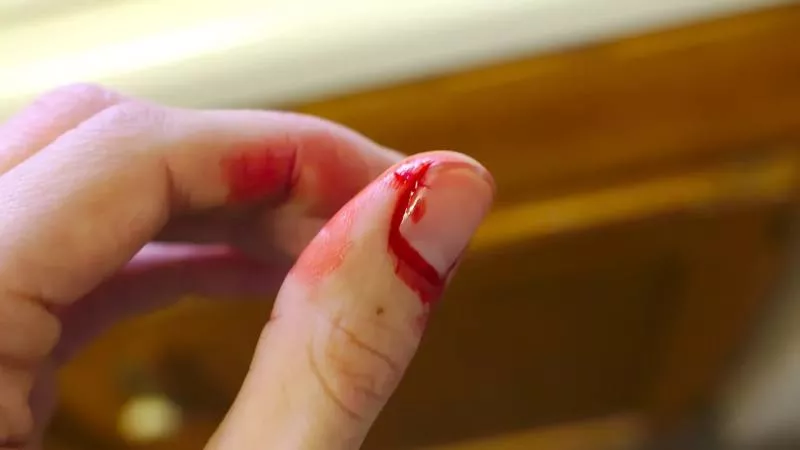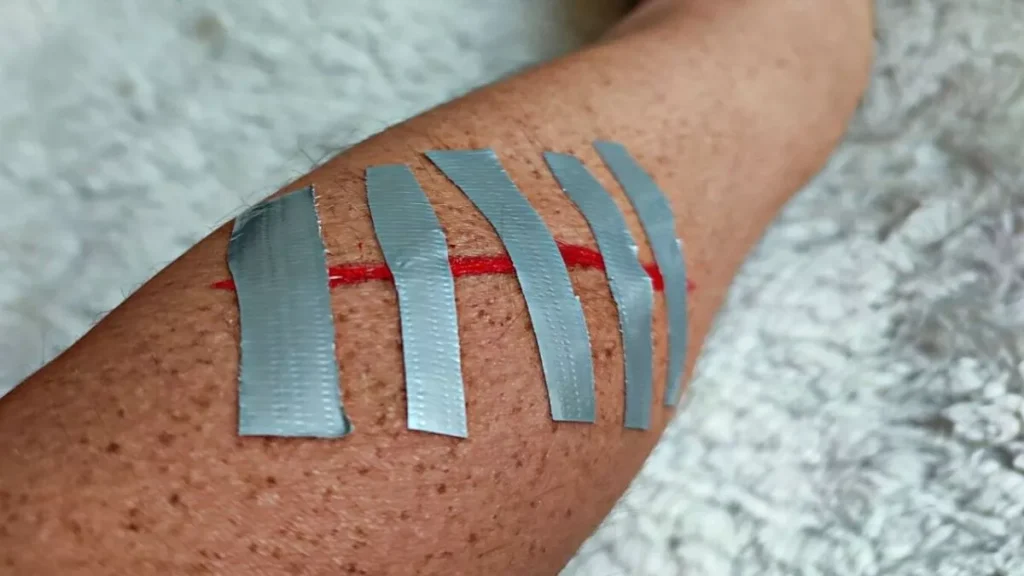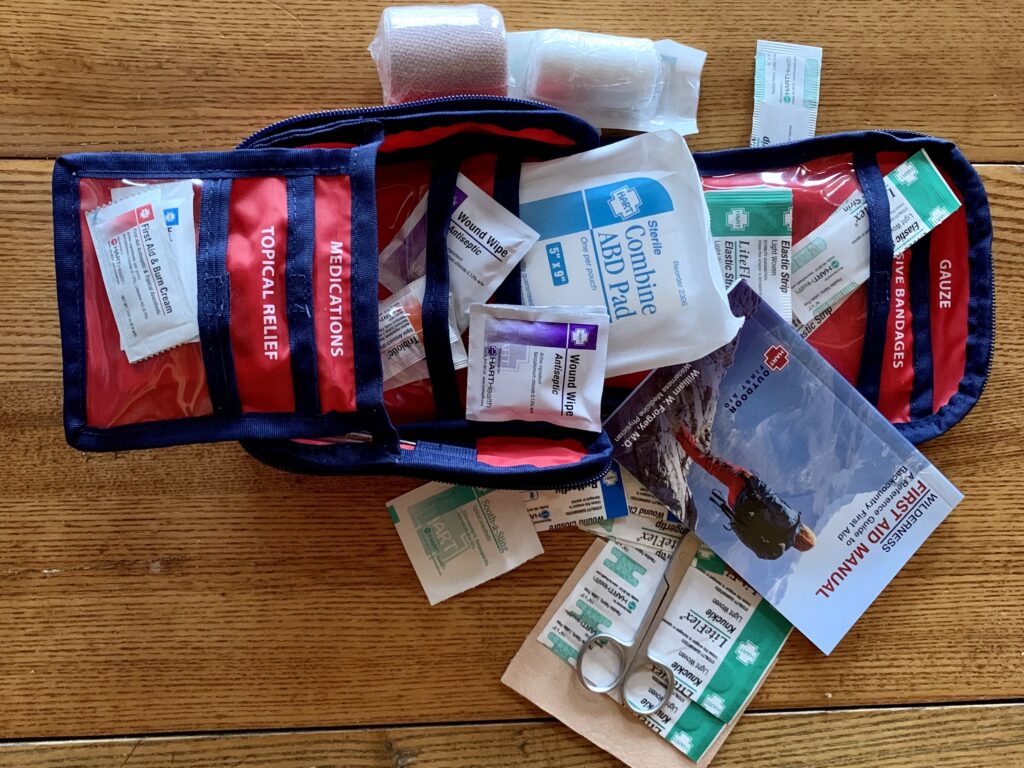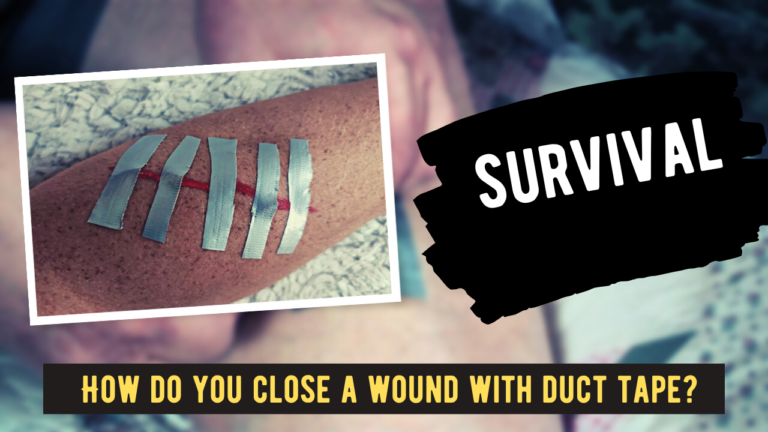If you have a cut, you probably wouldn’t think about first aid with duct tape right?
Don’t blame you, after all, the first use of duct tape is not necessarily wound care.
Nevertheless, this useful tool is also suitable for this, believe it or not.
In the case of cuts in particular, especially if they bleed profusely, rapid treatment may be necessary.
If you don’t have a bandage or band-aid nearby, you can use duct tape instead.
You may encounter this scenario primarily in survival situations. And if your medical supplies are already gone or you don’t even have them on hand, use duct tape.
How Does Duct Tape Help Your Wound ?
Of course, not every wound can be completely treated with duct tape, but this clever tool can help the body to heal itself.
The duct tape holds the ends of the wound together, keeping it closed, making it harder for bacteria, for example, to enter and cause dangerous infections.
If you leave the wound open, there is a constant risk of infection and the wound will heal more slowly. So make sure the wound is closed and it stays that way!
Does Every Cut Have To Be Treated ?
Whether your cut should be treated or closed is a decision you need to make on the spot. There are a few hints and warning signs that can serve as indicators so that you can orient yourself.
- Does the wound bleed?
- How bad is it bleeding?
- Is the wound open?
- If yes, how far?
- Are you in a polluted environment?
Don’t get me wrong: if you suffer from an open wound, it should definitely be closed, no matter where you are.
These factors are only intended to help you determine how urgent the need for care for the cut is.
And more importantly, if a wound is deep or has injured arteries and is bleeding profusely, a pressure bandage is urgently needed to counteract the loss of blood. If you are unsure of the seriousness of an injury or what to do, you should always call a doctor.
How Best TO Treat The Wound With Duct Tape – A Guide
1. CLEAN THE WOUND
The most important thing, as with any medical procedure, is that you clean the wound. It is best to use clean water and soap or disinfectant for this.
Before you close the wound, you want to make sure that no harmful bacteria are already inside.
Also make sure the blood flow is stopped or at least slowed down a bit. Accordingly, create a little pressure on the wound, as you probably know it from everyday life.

2. CUT DUCT TAPE TO SIZE
To dress your wound with duct tape, what do you need?
That’s right, duct tape!
Cut a piece slightly larger than your wound. It should cover them completely.
If you are holding a larger cut with several pieces of cloth tape, cut them into strips about 1-1.5 cm wide, similar to band-aids. You can then apply these strips one after the other to hold the wound together.
3. ATTACH OVER THE WOUND
If you’re using a single piece of duct tape, place it directly over the wound so that it’s held together tightly underneath.
If you are using multiple pieces to dress a large incision, place them along the wound from beginning to end, similar to a suture used to hold the wound together. Be careful not to over-tighten the cloth tape, but also not to loose it.

After all, you don’t want your tape to fail, nor do you want to risk having to abandon or redo your temporary medical procedure because it’s causing you even more unnecessary pain than the actual wound.
4. USE DISINFECTANT CREAMS
If all has gone well by then and you have access to it, consider applying antibacterial creams or ointments to the wound.
The wound and duct tape are still not sterile, so there is still a risk of bacterial infection. By disinfecting, however, you avoid this as much as possible.
WHAT IS THE BEST WAY TO KEEP THE WOUND CLEAN?
As already mentioned, the greatest risk of any wound is the resulting infection, which in the worst case can end in sepsis, i.e. blood poisoning. However, here are a few tips for you on how to avoid that.
COVER THE WOUND WITH A PIECE OF CLOTHING
To prevent additional bacteria, viruses or other harmful influences from penetrating the wound, you should always cover it with a piece of clothing. It is best to keep the wound as dry and clean as possible.
CHANGE THE COVER REGULARLY
Of course, you shouldn’t leave the same dressing on your wound every day. Bacteria are particularly good at attaching themselves to the part of the clothing that touches the wound.
It is best to change the cover every one to two days. This way you can wash the previous cover and then use it again.
WATCH THE WOUND CLOSELY
You’ll feel infection and inflammation over time, but when you’re in the middle of a survival scenario and pumped with adrenaline, the pain can go unnoticed.
So watch your wound closely and pay particular attention to the following factors that can indicate inflammation or infection:
- pus oozing from or around the wound
- The wound or the area around it is very red
- The area around the wound is warmer than other parts of the body
- There is severe swelling at or around the wound
Check your wound regularly. If you experience any of the above signs, or even a combination of them, you should consider taking antibiotics.
Sepsis is pretty much one of the worst things that can happen to you in a survival scenario. So treat your body responsibly, in absolutely every situation.
CONCLUSION: DUCT TAPE MAY NOT BE THE NUMBER ONE CHOICE, BUT IT SERVES ITS PURPOSE
Of course, if you have one, your first aid kit will be your primary use when suffering from a wound like this.

In fact, this article is a little more about being willing to use everything around you than actually using duct tape to close wounds.
You must be aware that in survival situations you will not always have access to the things that are taken for granted in everyday life.
Accordingly, you have to be creative and improvise when it counts. So, through this article in particular, keep your understanding that many things can be misused in an emergency if you are just a little creative.
And as you know, creativity is a must when it comes to survival!
